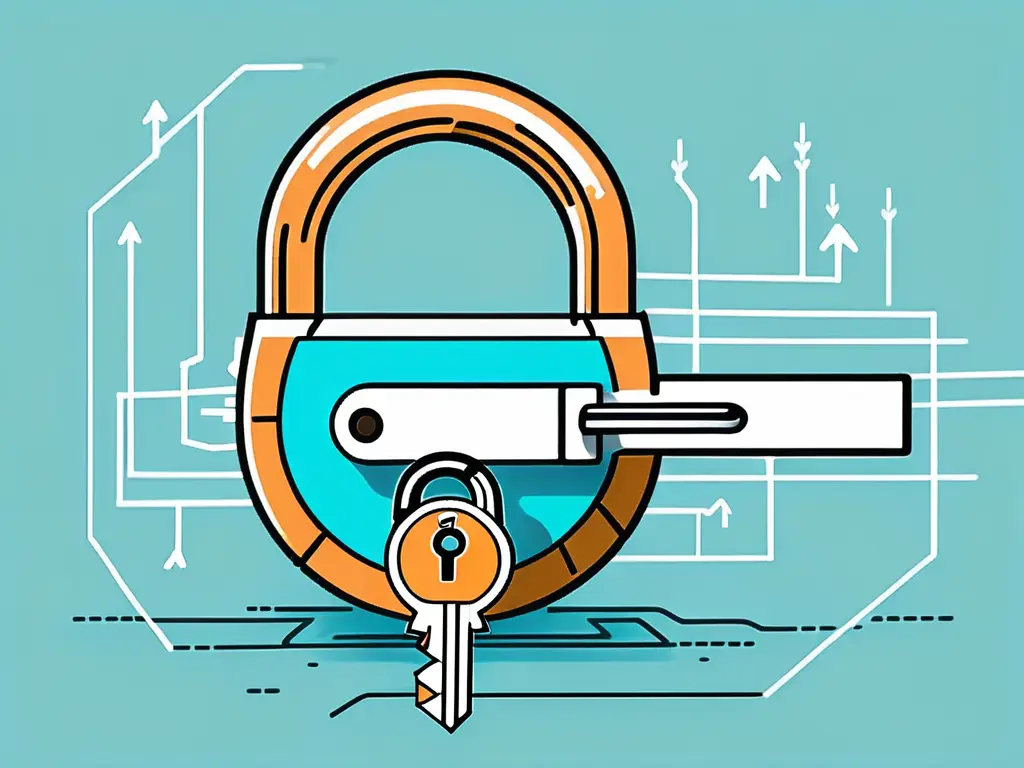At the heart of blockchain technology lies the concept of decentralization. Transactions are recorded on a public ledger, known as the blockchain, that is accessible to all participants in the network. Smart contracts play a crucial role in this ecosystem, ensuring trust and transparency.
Smart contracts possess several key features that make them highly desirable in various industries. They are immutable, meaning they cannot be altered once the code is written and deployed. Additionally, smart contracts are self-executing, automatically enforcing the terms of the agreement without the need for third-party involvement.
What are Smart Contracts?
Smart contracts are computer programs that facilitate, verify, or enforce contractual agreements. They enable trusted transactions between parties without the need for intermediaries. By eliminating intermediaries, smart contracts help reduce costs and enhance efficiency.
But what exactly makes smart contracts so revolutionary? Let’s dive deeper into the role they play in blockchain technology.
The Role of Smart Contracts in Blockchain Technology
Smart contracts serve as the building blocks of blockchain technology. They enable transactions to be executed automatically, securely, and transparently. By automating the enforcement of agreements, smart contracts remove the potential for human error and bias.
Imagine a world where contracts are executed seamlessly without requiring lawyers, banks, or other intermediaries. Smart contracts make this possible by providing a decentralized and trustless system.
With smart contracts, participants can trust the automated execution of transactions, eliminating the need to rely on potentially untrustworthy intermediaries. This increased trust opens up a plethora of opportunities for industries such as finance, supply chain management, and healthcare.
Key Features of Smart Contracts
Smart contracts possess several key features that set them apart from traditional contracts. Firstly, they are immutable, meaning they cannot be changed once deployed. This immutability ensures the integrity and trustworthiness of the contract.
Imagine a contract that cannot be tampered with or altered by any party involved. This is the power of immutability in smart contracts. It provides a level of security and confidence that traditional contracts simply cannot match.
Secondly, smart contracts are self-executing. They automatically execute the terms of the agreement once predefined conditions are met. This removes the need for intermediaries and reduces the time and cost associated with manual processing.
Consider the time and effort saved when contracts execute themselves based on predefined conditions. This automation streamlines processes, reduces administrative burdens, and allows parties to focus on more important aspects of their business.
Lastly, smart contracts are transparent. All transactions recorded on the blockchain are visible to all participants, ensuring transparency and accountability. This transparency helps build trust among participants, creating a robust ecosystem for business transactions.
Imagine a world where every transaction is recorded on a public ledger, visible to all parties involved. This level of transparency creates a sense of accountability and fosters trust among participants. It also allows for easy auditing and dispute resolution.
The Concept of Reentrancy Attacks
Despite the numerous benefits offered by smart contracts, they are not immune to vulnerabilities. One such vulnerability is the threat of reentrancy attacks. Let’s first define these attacks to understand them.
Reentrancy attacks occur when a contract is called multiple times before its previous execution is complete, enabling an attacker to exploit the contract’s logic. This can lead to unintended consequences, such as unauthorized access to funds or manipulation of contract variables.
Reentrancy attacks take advantage of the fact that smart contracts in some blockchain platforms allow external contracts to call back into the contract being executed. This recursive behavior can create a loophole that attackers exploit to gain control over the contract’s execution.
Defining Reentrancy Attacks
Reentrancy attacks typically involve an attacker deliberately crafting a contract call sequence to exploit vulnerabilities in the target contract. The attacker’s contract repeatedly calls the target contract’s code, taking advantage of the reentrancy loophole to execute malicious actions.
For example, in a scenario where a contract has a function that transfers funds and updates the account balance, an attacker can repeatedly call this function within their contract before the balance is updated. This can lead to the attacker draining the contract’s funds, as the contract mistakenly believes it still has the necessary balance to proceed.
How Reentrancy Attacks Work
Reentrancy attacks can be executed in various ways, depending on the specific vulnerabilities present in the target contract. Let’s explore a few common tactics employed by attackers:
1. Recursive Calls: Attackers exploit the recursive behavior of smart contracts to repeatedly call a vulnerable function within the target contract. By doing so, they can execute malicious actions multiple times, taking advantage of the contract’s flawed logic.
2. External Contract Interaction: Reentrancy attacks can also involve the interaction between multiple contracts. Attackers may create a malicious contract that interacts with the target contract, exploiting vulnerabilities in the communication between the two contracts to gain control over the target contract’s execution.
3. Manipulation of Shared State: Reentrancy attacks sometimes involve manipulating shared state variables between different functions within the target contract. By exploiting race conditions or other synchronization issues, attackers can manipulate the contract’s state to their advantage, leading to unauthorized access or manipulation of critical data.
It is important to note that preventing reentrancy attacks requires careful design and implementation of smart contracts. Developers must ensure that critical functions are properly secured and that external contract interactions are thoroughly vetted to prevent potential vulnerabilities.
By understanding the concept of reentrancy attacks and the tactics employed by attackers, developers can take proactive measures to mitigate the risk and enhance the security of their smart contracts.
The Intersection of Smart Contracts and Reentrancy Attacks
Given the potential for reentrancy attacks, it is crucial to understand why smart contracts are vulnerable to such attacks in the first place.

Smart contracts, while revolutionary in their ability to automate and self-execute agreements on the blockchain, are susceptible to reentrancy attacks due to their inherent design. These attacks exploit how smart contracts interact with each other and the blockchain, allowing malicious actors to manipulate the contract’s behavior and potentially siphon funds or disrupt operations.
Why Smart Contracts are Vulnerable to Reentrancy Attacks
One reason is the lack of atomicity in some smart contract platforms. Atomicity ensures that an operation either completes in its entirety or not at all. The lack of atomicity in certain platforms can leave smart contracts exposed to reentrancy attacks.
The immutable and transparent nature of blockchain technology, while a strength in many aspects, can also make it challenging to rectify vulnerabilities once they are exploited. This characteristic can amplify the impact of reentrancy attacks and make them harder to mitigate.
Additionally, complex inter-contract interactions can create avenues for attackers to manipulate the flow of execution and exploit vulnerabilities. Smart contract developers must be aware of these potential attack vectors to ensure the security of their contracts.
The Impact of Reentrancy Attacks on Smart Contracts
Reentrancy attacks can have severe consequences for smart contracts and the blockchain ecosystem as a whole. They can lead to financial losses, compromise the integrity of transactions, and erode trust in the technology.
Successful reentrancy attacks can deter businesses from adopting blockchain and smart contract technology, hindering its widespread adoption and potential benefits.
Preventing Reentrancy Attacks in Smart Contracts
Given the risks associated with reentrancy attacks, it is essential to take proactive measures to prevent them from occurring in smart contracts.

Reentrancy attacks are a vulnerability in smart contracts that allow malicious users to repeatedly call a function before the previous function call is completed, potentially leading to unexpected behavior and financial losses. These attacks have been responsible for some high-profile hacks in the blockchain space, emphasizing the importance of implementing robust security measures.
Best Practices for Secure Smart Contract Development
Developers should follow best practices for secure smart contract development to minimize the risk of reentrancy attacks. This includes conducting thorough code audits, adhering to established coding guidelines, and utilizing secure development frameworks.
Additionally, developers should prioritize simplicity and clarity in their smart contract design, avoiding complex and convoluted logic that could introduce vulnerabilities. By following a principle of least privilege and minimizing the use of external calls, developers can reduce the attack surface and enhance the security of their smart contracts.
Developers should implement security measures such as access control mechanisms and input validation to prevent unauthorized access and manipulation of contract functions and variables.
Tools and Techniques for Detecting Reentrancy Attacks
Various tools and techniques are available to detect and mitigate the risk of reentrancy attacks. These include static code analysis tools, dynamic analysis tools, and formal verification methods.
Static code analysis tools can help identify potential vulnerabilities by analyzing the codebase without executing it. In contrast, dynamic analysis tools simulate real-world scenarios to uncover vulnerabilities that are not apparent in static analysis. Formal verification methods involve mathematically proving the correctness of a smart contract, offering a high level of assurance against vulnerabilities.
By leveraging these tools and techniques, developers can identify potential vulnerabilities and proactively address them before deploying smart contracts into the blockchain ecosystem.
The Future of Smart Contracts and Reentrancy Attacks
As blockchain technology evolves, so do the threats and security measures surrounding smart contracts and reentrancy attacks.

Evolving Threats and Security Measures
As new vulnerabilities and attack vectors emerge, developers and participants in the blockchain ecosystem must stay informed and updated on the latest security measures.
One of the key challenges in smart contract security is the potential for reentrancy attacks. In these attacks, an attacker can repeatedly call a vulnerable contract before the previous call completes, leading to unexpected behavior and potential financial losses. To combat this threat, developers are exploring innovative solutions, such as using mutex patterns and secure coding practices to prevent reentrancy vulnerabilities.
Technological advancements, such as formal verification and homomorphic encryption, promise to strengthen smart contract security and mitigate the risk of reentrancy attacks. Formal verification allows developers to mathematically prove the correctness of their smart contracts mathematically, reducing the likelihood of bugs and vulnerabilities. Homomorphic encryption enables computations on encrypted data, offering a way to process sensitive information within smart contracts securely.
The Role of Regulation in Mitigating Reentrancy Attacks
Regulatory bodies also recognize the need for enhanced security measures in the blockchain space. Governments and organizations are working towards implementing regulations and standards to protect users and ensure the integrity of blockchain transactions.
Regulation plays a pivotal role in creating a safe and secure environment for smart contract development and deployment, bolstering the overall resilience of the blockchain ecosystem. By establishing clear guidelines and compliance requirements, regulators can help mitigate the risks associated with reentrancy attacks and promote trust in blockchain technologies.
Conclusion
Understanding reentrancy attacks with smart contracts is vital for anyone involved in blockchain. By recognizing smart contracts’ vulnerabilities and implementing best practices and security measures, we can ensure the continued growth and adoption of this transformative technology.
As you navigate the complexities of smart contracts and strive to fortify your blockchain initiatives against reentrancy attacks, the expertise of Blue Goat Cyber becomes indispensable. Our veteran-owned cybersecurity firm specializes in safeguarding digital landscapes, including those governed by stringent HIPAA and FDA regulations. With a focus on medical device cybersecurity and comprehensive penetration testing, we are equipped to address the unique challenges businesses face in today’s cyber-threat landscape. Don’t let the intricacies of blockchain security overwhelm you. Contact us today for cybersecurity help. Let Blue Goat Cyber be your ally in transforming potential vulnerabilities into fortified strengths, ensuring your smart contracts are as secure as they are innovative.


